Low FODMAP Snickerdoodles are a chewy sugar cookie, with slightly crisp edges, coated in cinnamon/sugar. A classic cookie that is easy to make and loved by all ages.
What Are Snickerdoodles?
Well, first and foremost, the are a delicious cinnamon and sugar laden chewy cookie! But they come with a mysterious history – and distinguishing factors that set them apart from mere sugar cookies.
What Is The History Of Snickerdoodles?
No one knows the history of Snickerdoodles for sure, but there is conjecture. The beauty of having over 2000 cookbooks in my library is that I can research the origin of recipes in a remarkably civilized way. I can discern the validity of authors and the voracity of information, while on the Internet, “fake news” abounds – even when it comes to cookies!
Here are a few explanations as to the history of Snickerdoodles:
- The recipe hails from early colonial America, New England to be precise, where there was a penchant for naming cookies in a whimsical way. In fact, many recipe names created in the States during the 19th and early 20thcentury were fanciful such as Joe Froggers, Hermits, Crybabies (or Cry Babies) and Jumbles, giving credence to this supposition.
- It is possible that the recipe was brought to the States by English, Scottish or Dutch immigrants.
- The word “Snickerdoodle” might be a derivation of the German word “Schneckennudel”, which is used to describe a cinnamon bun. “Schnecken” means snail and these buns are coiled up into a round shape, reminiscent of a snail. These buns and our cookies have a round shape, cinnamon and sugar in common. The literal translation of “Schneckennudel”, is “snail noodles”, which is neither here nor there and was apparently discussed in early versions of Joy of Cooking, yet none of the six printings that I have contain this statement.
- Snickerdoodle recipes were popularized in the 1890s when it was circulated in newspapers; at the time it was a bar cookie. (It took on its individual round shape in the 1930s, supposedly).
So, we might not know where Snickerdoodles hail from initially, but their endurance in cookie collections, publications and popularity is certainly due to how delicious they are as well as for how simple they are to make.
What Ingredients Are Needed To Make Low FODMAP Snickerdoodles?
Snickerdoodles contain very basic baking ingredients, with one possible exception:
- Butter – Butter as the fat of choice for flavor and texture (although shortening sometimes appears).
- Sugar – Always white granulated; sometimes a bit of brown sugar, too.
- Eggs – Please use graded large
- Vanilla extract – Please use pure.
- Flour – In our case, low FODMAP gluten-free flour with xanthan gum for best texture.
- Salt – Most sweet baked recipes need a bit of salt for flavor balance
- Leavener – In this case, cream of tartar is typically included, although not always. (More on that below).
I happen to keep cream of tartar around in the Test Kitchen all the time and use it regularly when making anything involving meringue (more on this down below), but it might not be something you have in your pantry.
Look for cream of tartar along with other jarred herbs and spices in your supermarket. It is not expensive.
Why Do Snickerdoodles Contain Cream Of Tartar?
The cream of tartar gives Snickerdoodles their distinctive chewy texture. Baking powder would make them cakey and overly puffy; baking soda alone would yield a crisper result.
What Is Cream of Tartar?
Of all of the ingredients, cream of tartar might be the one you are not familiar with. What is cream of tartar? Let’s do a deep dive:
- Tartaric acid is another name for cream of tartar.
- Cream of tartar is acidic.
- It is a very fine, quick dissolving white granulated powder that is a by-product of the wine-making industry; it forms on the insides of casks during wine making after fermentation; it is gathered and refined.
- Cream of tartar is used in candy-making to prevent crystallization of sugars, preventing graininess in finished products.
- It is often used when making meringues to help stabilize the protein in egg whites as they whip, creating a very stable foam, subsequently maximizing the egg white’s volume.
- You can use cream of tartar as a component of homemade baking powder, along with baking soda. Try a 2:1 ratio of cream of tartar to baking soda.
- Cream of tartar can be stored indefinitely if stored in an airtight container.
What Does Cream Of Tartar Do?
Cream of tartar is a leavener, so it has a leavening (rising) action. It is a chemical leavener, just like baking powder and baking soda.
Do Snickerdoodles Always Contain Cream of Tartar?
Snickerdoodle recipes do not always contain cream of tartar; they sometimes contain baking powder. It is my opinion that if they do not contain cream of tartar, then they are not true Snickerdoodles, because their trademark chewy texture and flavor will not be present. Call them cinnamon sugar cookies.
What Is The Difference Between Sugar Cookies And Snickerdoodles?
Most sugar cookies do not have a cinnamon/sugar topping, but they could, of course. Also, most sugar cookies are either crunchy or cakey and typically rely on baking powder or baking soda to provide leavening and their desired texture. Sometimes sugar cookies have no leavener at all.
The use of cream of tartar in a Snickerdoodle gives it the texture it is known for, which is slightly chewy, with crisper edges. They puff up a bit and then settle down, creating a crackled surface, also due to the cream of tartar’s leavening action. That, along with the cinnamon/sugar are the hallmarks of Snickerdoodles!
Let’s Look At The Ingredients for Low FODMAP Snickerdoodles
Don’t forget to add pure vanilla extract your cookie dough! I left it out of the image by mistake. Don’t make that oversight with your cookies!
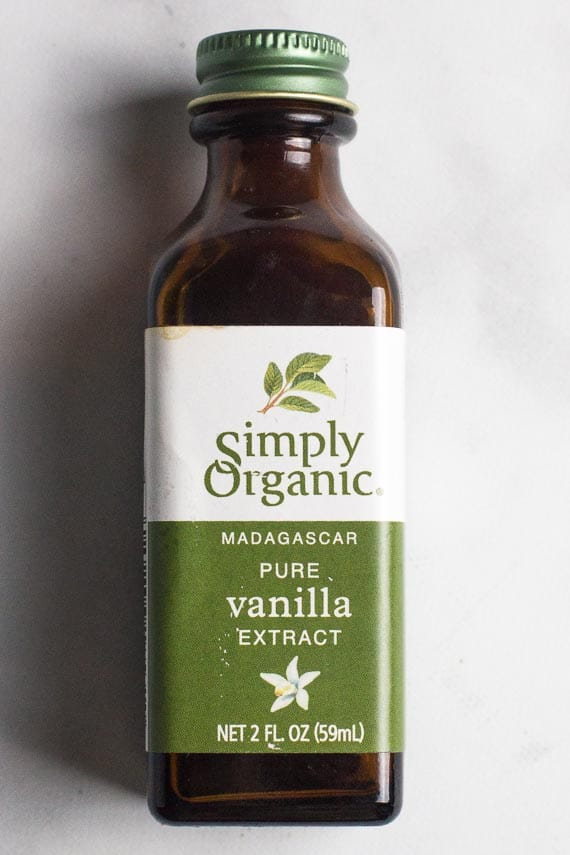
How To Make Low FODMAP Snickerdoodles
Snickerdoodles are easy to make and for this recipe I decided to do some further research as to what makes the best ones. Lucky for me, some other enterprising folks had recently done a side-by-side comparison of four popular recipes and it was no surprise to me that the Bon Appetit magazine (my alma mater) recipe came out on top.
The original was not gluten-free and also called for vanilla bean, which I do not think this cookie needs for the extra flavor boost and certainly your wallet doesn’t need to outlay the $$$ for vanilla beans here.
Ultimately, the winning approach used a little brown sugar in the cookie dough, which I stuck with and liked very much. It provides a bit more depth to the flavor and a tiny bit more moisture, as well. This also distinguishes our Snickerdoodle from a conventional sugar cookie. Not that there is anything wrong with a conventional sugar cookie! Just different.
Also, as many GF flour blends are heavier than all-purpose flour, I reduced that amount of that ingredient as well for our Low FODMAP Snickerdoodles. Another change was an increase in the amount of topping.
Note that the butter is melted and then cooled. Using melted butter is a great way to add “chew” to a cookie or bar, but don’t rush this step and try to proceed while it is still warm. Cooling the melted butter is a very important step. If you do not cool the melted butter, the finished texture of the cookie will not be optimal.
Also, when you beat the cooled melted butter and sugars, it should look creamy, like this below. This cannot be accomplished if you try this with warm melted butter.
Patience Is Key: Rest The Cookie Batter
Another very important step is to allow the Low FODMAP Snickerdoodles cookie dough to rest for about half an hour. I will often rest cookie doughs, sometimes even overnight. The texture of oatmeal type cookies hugely improves after a rest. It is all about hydration. During a rest, in this case at cool room temperature, the liquid ingredients hydrate the dry ingredients and increase the chances for chewiness!
After 30-minutes, the dough should be firm enough for you to roll into balls, as seen below. If it isn’t, simply chill in the fridge as oven preheats.
Space the cookie balls out evenly on parchment lined sheet pans after rolling them in the cinnamon/sugar topping.
Once baked, the low FODMAP Snickerdoodles spread out to a nice big size.
Our Low FODMAP Snickerdoodles are a little crispy around the edges, chewy in the middle and coated with cinnamon sugar. Great as a snack or with a hot cup of tea or coffee.
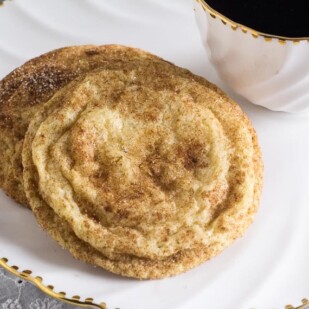
Low FODMAP Snickerdoodles
Low FODMAP Snickerdoodles are a chewy sugar cookie, with slightly crisp edges, coated in cinnamon/sugar. A classic cookie that is easy to make and loved by all ages.
Low FODMAP Serving Size Info: Makes 30 cookies; 15 servings; serving size 2 cookies
Ingredients:
Snickerdoodles:
- 2 1/3 cups (339 g) low FODMAP, gluten-free all-purpose flour, such as Bob’s Red Mill 1 to 1 Gluten Free Baking Flour
- 2 teaspoons cream of tartar
- 1 teaspoon baking soda
- ½ teaspoon salt
- 1 cup (2 sticks; 226 g) unsalted butter, melted and cooled
- ½ cup (107 g) firmly packed light brown sugar
- 1 cup (198 g) sugar
- 2 teaspoons vanilla extract
- 2 large eggs, at room temperature
Topping:
- 3 tablespoons sugar
- 1 1/2 tablespoons ground cinnamon
Preparation:
-
For the Snickerdoodles: Whisk flour, cream of tartar, baking soda and salt together in a bowl to aerate and combine; set aside.
-
Using an electric mixer on medium speed, beat butter, brown sugar and sugar in a large bowl until creamy, scraping down the bowl as needed. Beat in vanilla.
-
Beat in the eggs, one at a time, until they are incorporated into the mixture. Continue beating until the mixture is pale yellow and beginning to thicken. Gradually add the dry ingredients in a few batches, beating on low speed, scraping down the bowl as necessary, until everything is well combined. Cover bowl with plastic wrap and let cookie dough to sit at cool room temperature about 30 minutes, during which the dough will firm up.
-
Position racks in upper and lower third of oven. Preheat oven to 400°F (200°C). Line two half-sheet cookie pans with parchment paper; you will be cooling them in-between uses and baking a few batches of cookies. Stir the Topping ingredients together in a small bowl.
-
Roll cookie dough into 2-tablespoon sized balls – we use a 1-ounce scoop for the purpose. Toss the balls in the Cinnamon/Sugar topping until coated all over and place on prepared pans, well-spaced apart. I arrange 6 cookies on each pan, evenly set apart. No need to flatten the cookies.
-
Bake for about 8 to 10 minutes, rotating pans back to front, and upper to lower halfway through baking. You are looking for crackled tops, slightly crispy, darker edges and the centers should still be a bit soft to the touch. Cool pans on racks, then continue with subsequent batches. Snickerdoodles can be stores in airtight containers at room temperature for up to 4 days.
Notes:
Tips
• Make sure to cool the butter after it is melted for best results.
• Allow cookie dough to sit for at least 30 minutes, to firm up before rolling into balls.
FODMAP Information
Our recipes are based on Monash University and FODMAP Friendly science.
- Sugar: Monash University and FODMAP Friendly have both lab tested white, granulated sugar. Monash states that a Green Light low FODMAP serving size of white sugar is ¼ cup (50 g). FODMAP Friendly simply states that they have tested 1 tablespoon and that it is low FODMAP. Regular granulated white sugar is sucrose, which is a disaccharide made up of equal parts glucose and fructose. Sucrose is broken down and absorbed efficiently in the small intestine.
Please always refer to the Monash University & FODMAP Friendly smartphone apps for the most up-to-date lab tested information. As always, your tolerance is what counts; please eat accordingly. The ultimate goal of the low FODMAP diet is to eat as broadly as possible, without triggering symptoms, for the healthiest microbiome.
Nutrition
All nutritional information is based on third-party calculations and should be considered estimates. Actual nutritional content will vary with brands used, measuring methods, portion sizes and more. For a more detailed explanation, please read our article Understanding The Nutrition Panel Within Our Recipes.

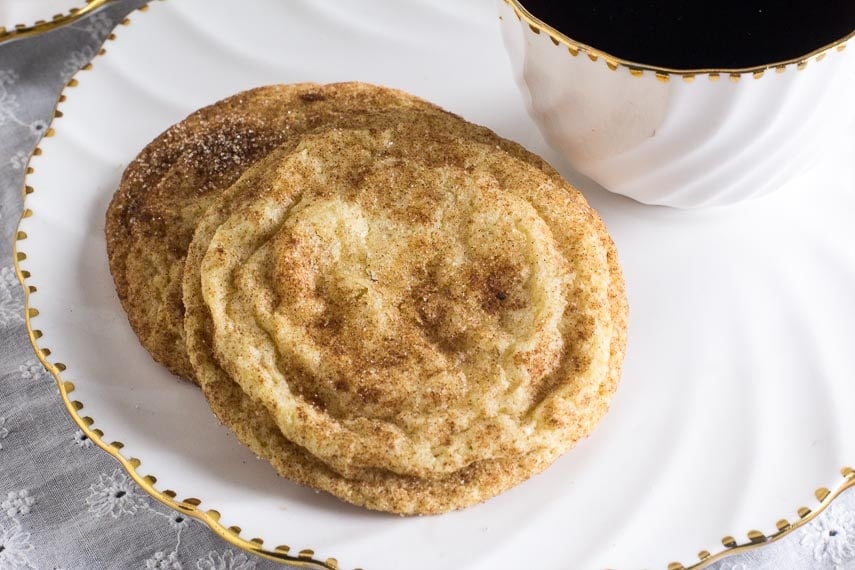

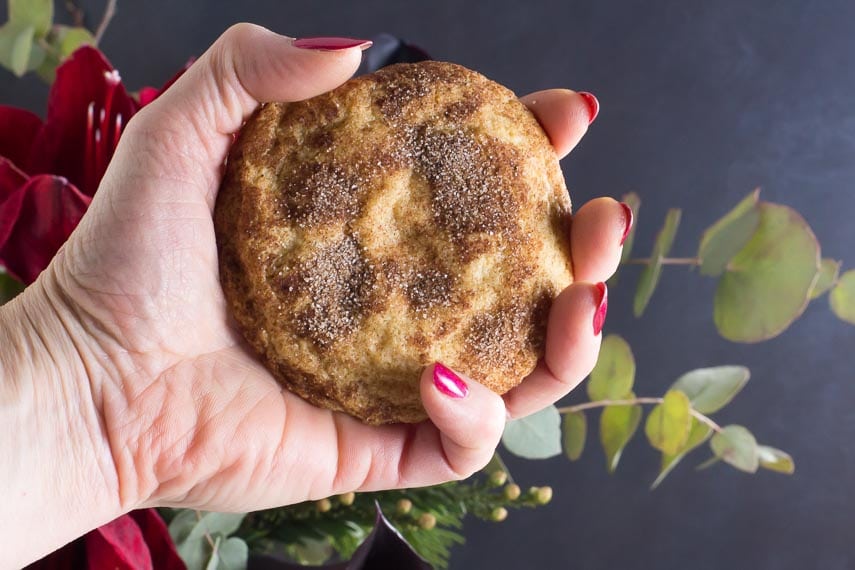

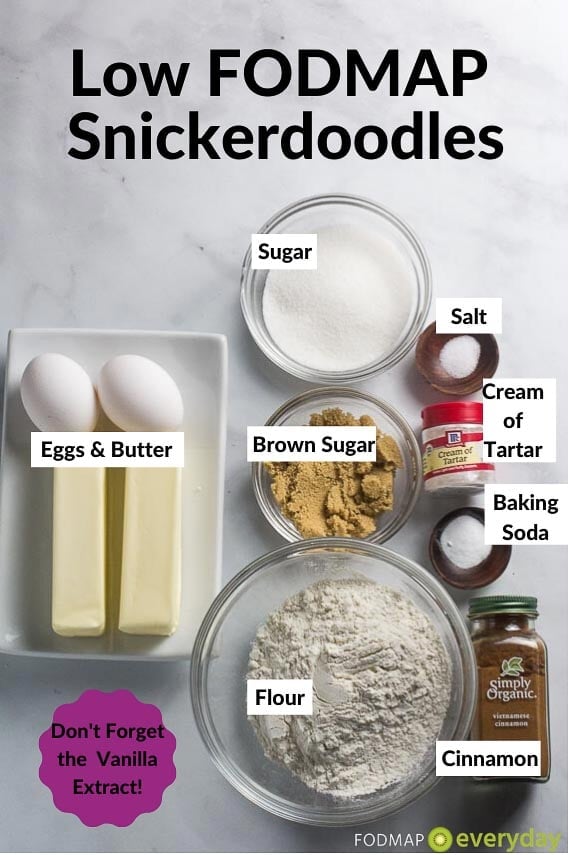
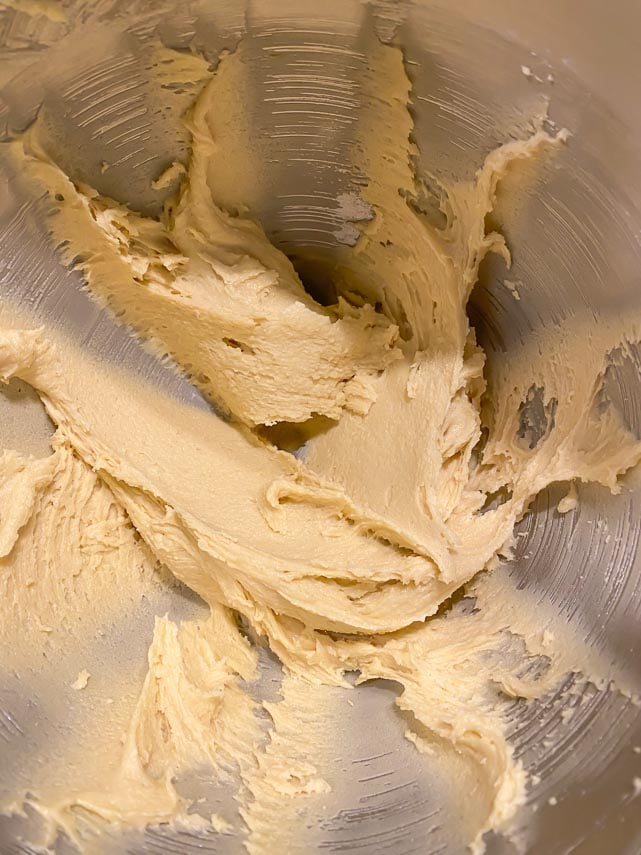
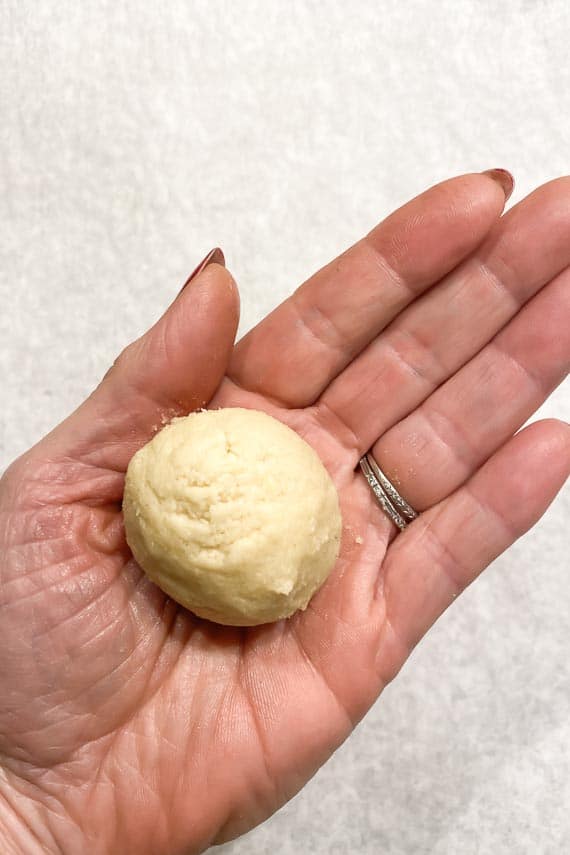
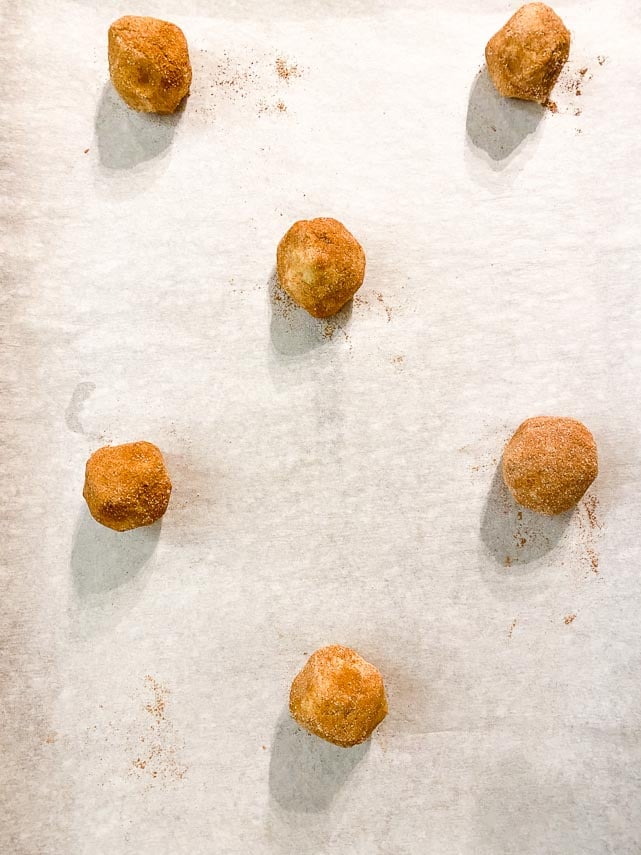
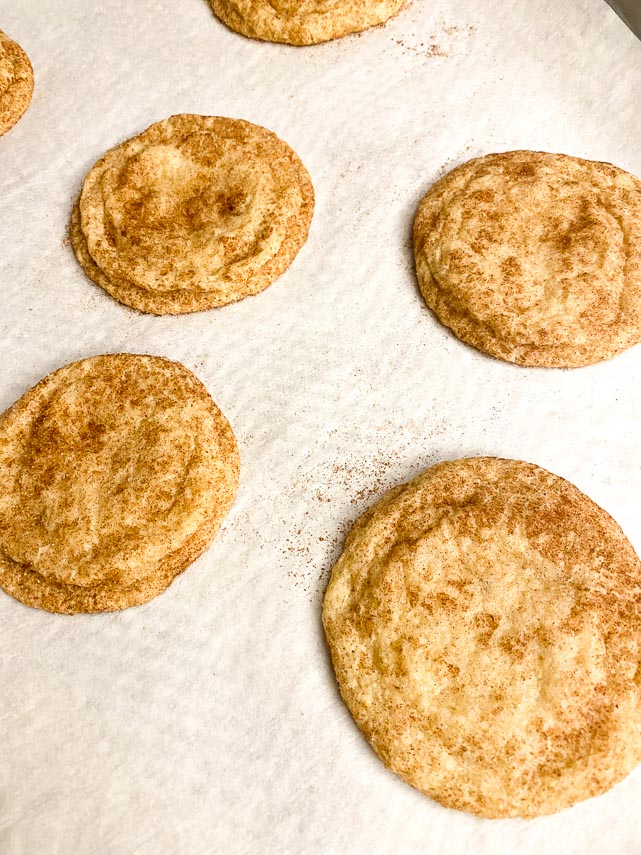
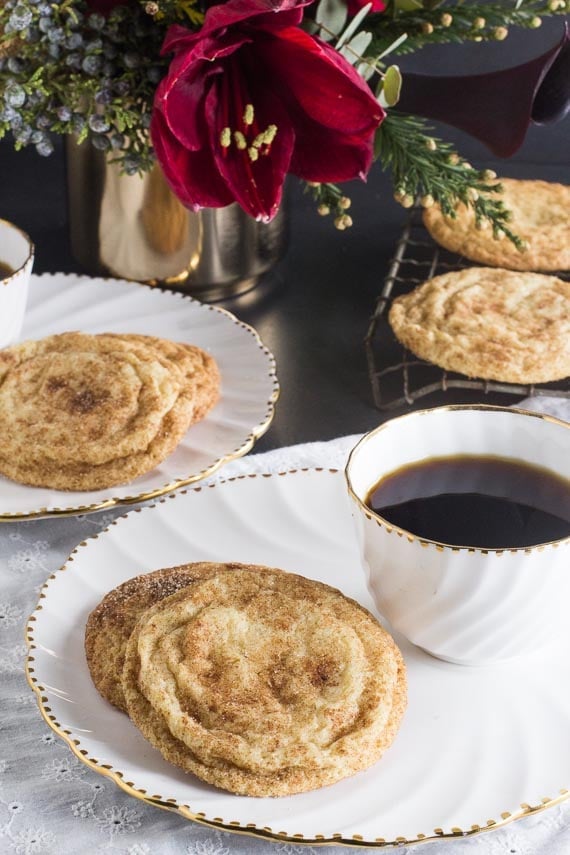
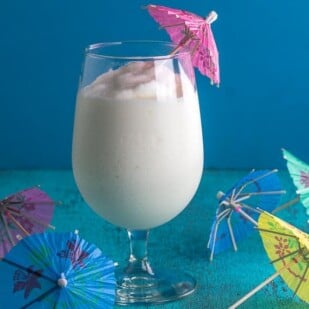
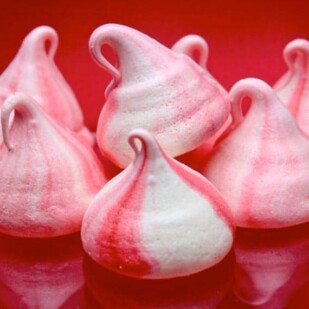






Delicious! Much yummier than the regular gluten non-low fodmap Snickerdoodle recipes. My husband and 5 children loved them too!
Every time I make these I am reminded how a “simple” recipe can truly end up being so much more than one expects. Bet you have to keep that cookie jar filled! If you haven’t checked out this one-bowl cookie recipe yet, take a look – Peanut Butter Oatmeal Chocolate Chunk Cookies with Raisins!
my cookies are just a flat pancake. they taste okay but don’t resemble the picture…what did I do wrong?
Hi Cathy, these are fairly flat cookies but if they do not look like the images, this is what I would review: Did you use the exact ingredients called for? Do you have accurate measuring implements? What were the temperatures of your ingredients? Were your leaveners fresh? What kind of sheet pan did you use, and did you line it with parchment? Do you have an oven thermometer and are you sure of your oven temp? Did you follow visual cues for dough preparation and allow cooling time? Were the cookies doled out in the recommended size? Most likely the answer is here. If you like to bake a lot, we have a baking ebook that contains 275 pages of recipes and Tips & Tricks, most of which is not on the website.
Can margarine be used instead of butter to make these non dairy? Also if I eat too much bob mill’s flour, what fodmap will I have too much of? Thanks!
The recipe has been tested as presented. I am sure you would get a cookie out of it using margarine, but I cannot attest to the taste or texture. As far as the flour blend, you have to use your Monash and FODMAP Friendly apps to help your self-education. You can look up ingredients and assess their FODMAP load. In this case I would keep track of fructans and fructose, mostly from the tapioca, but all of the ingredients are very low FODMAP.
What can I use instead of cream of tartar. Can I use baking powder or baking soda. If yes then how much would you suggest. Thank you so much.
The recipe explains the cream of tartar – it is key to this recipe.
Dédé